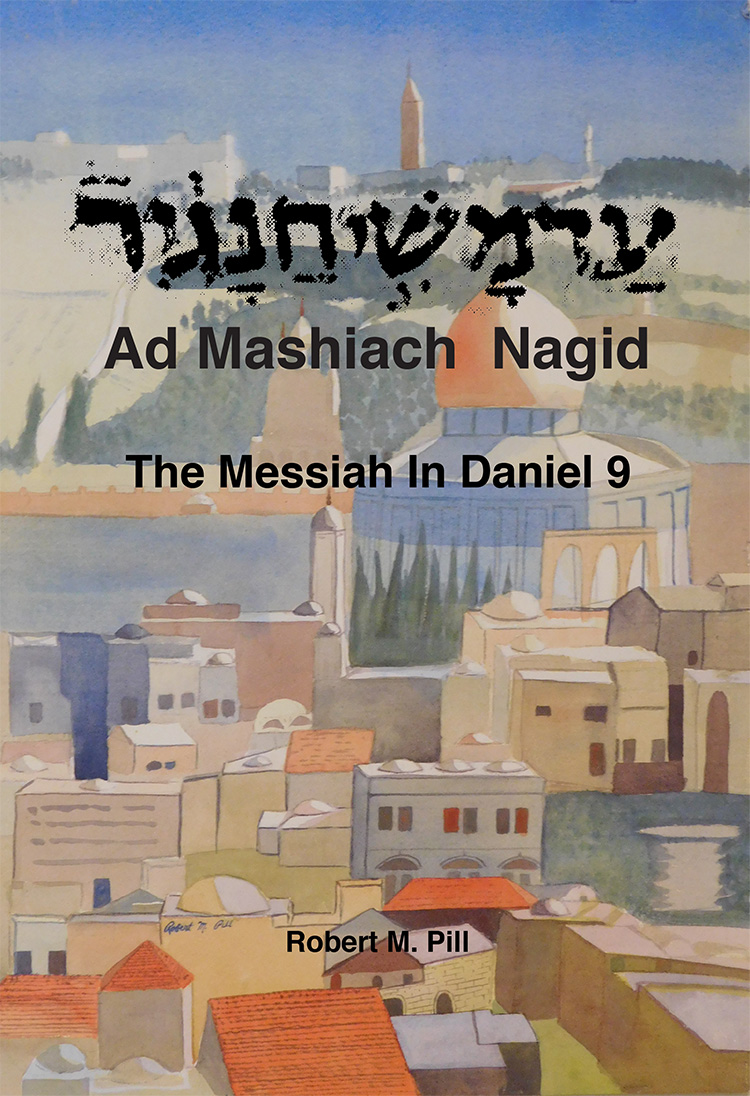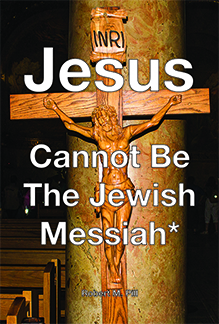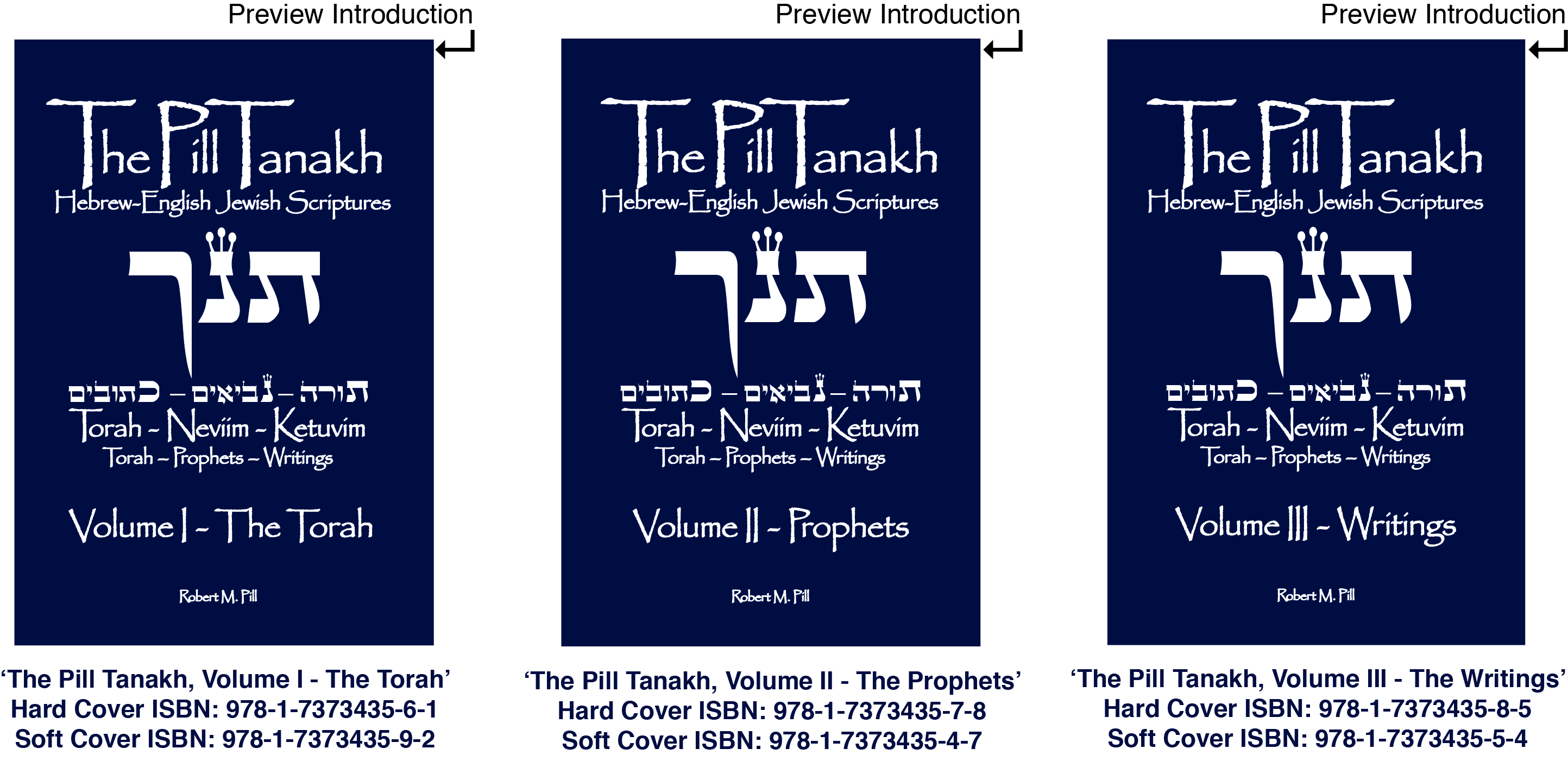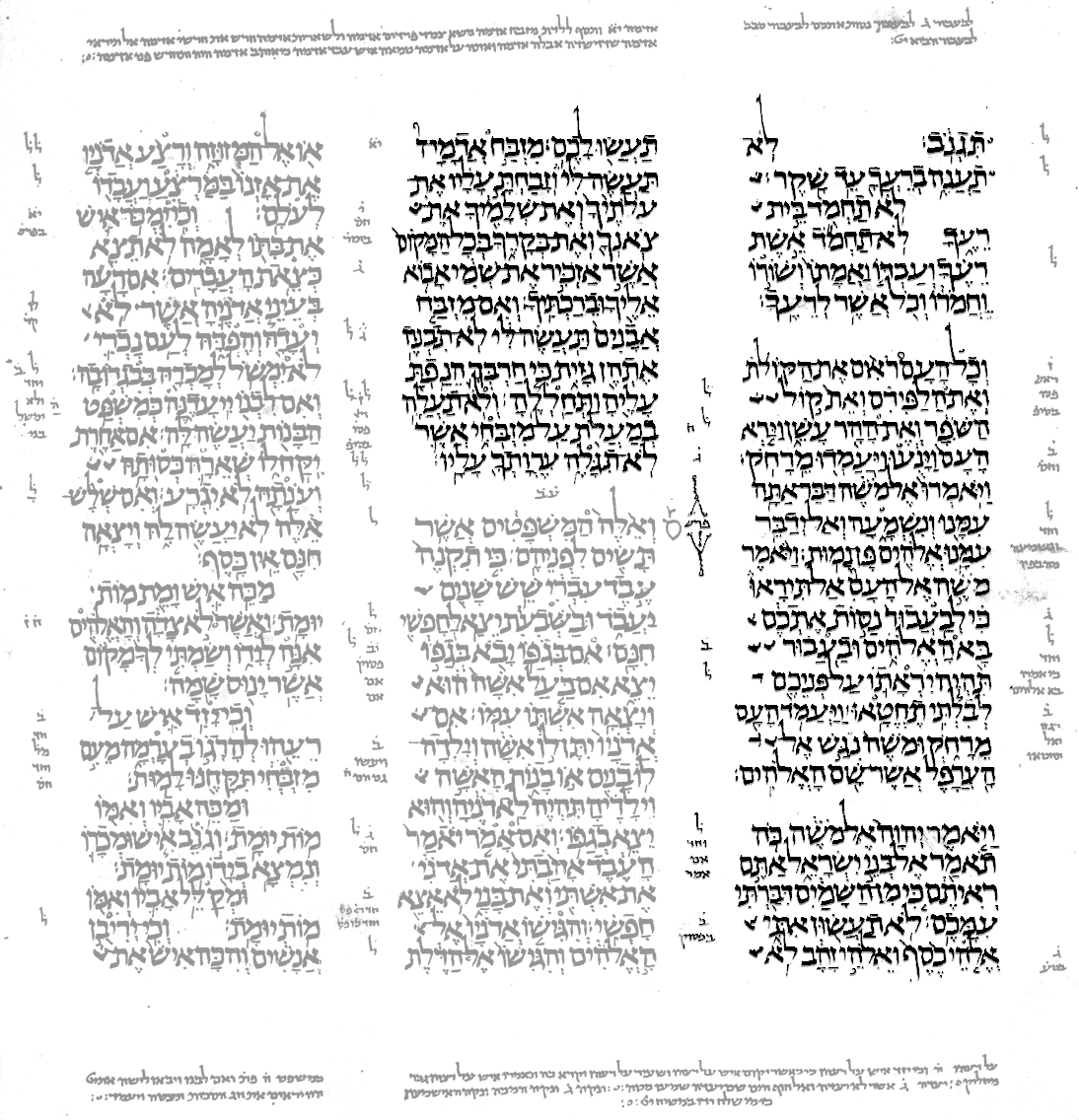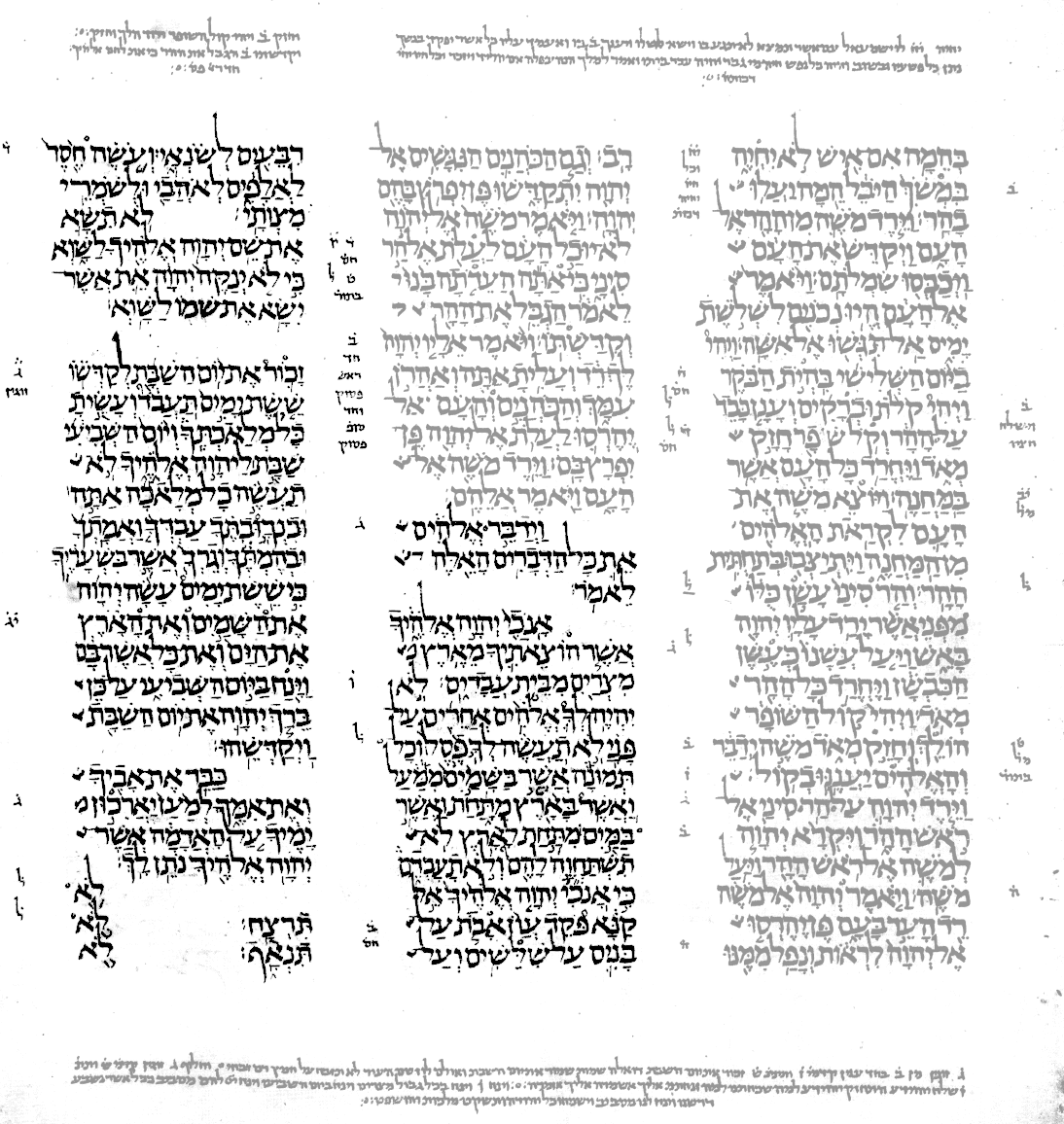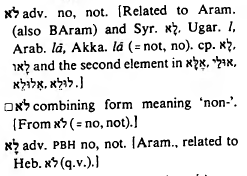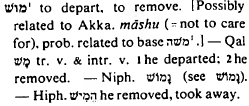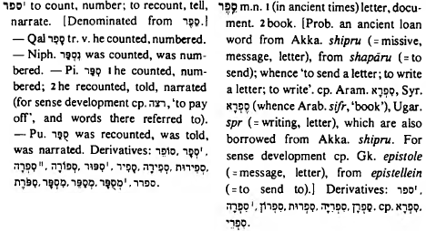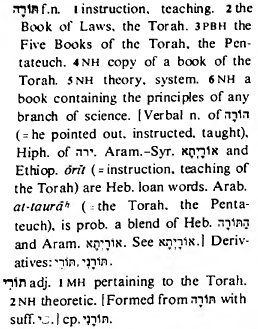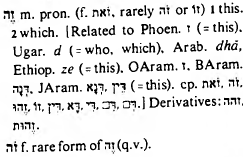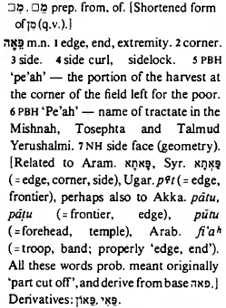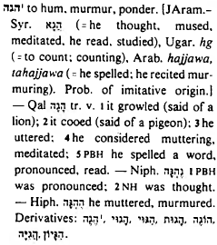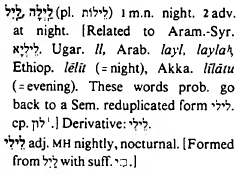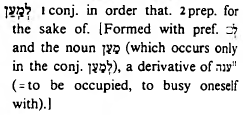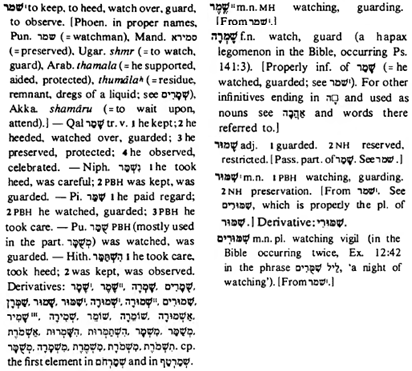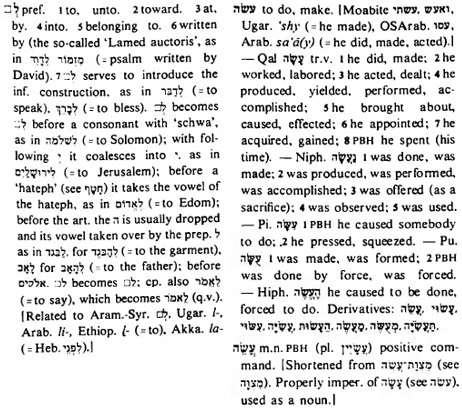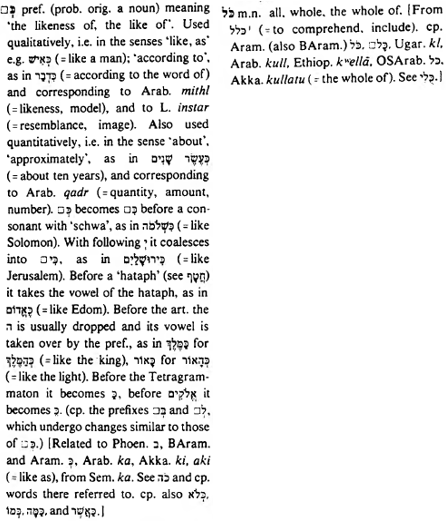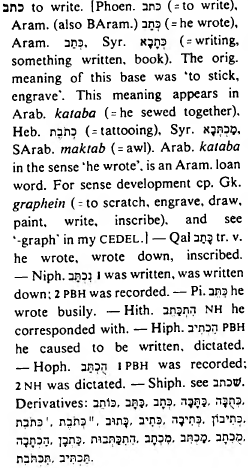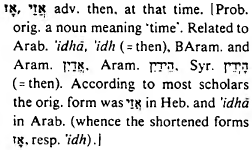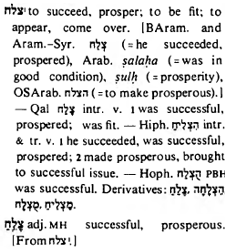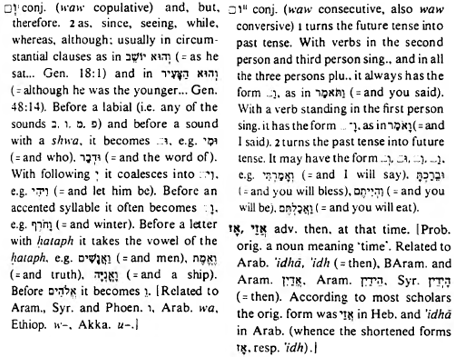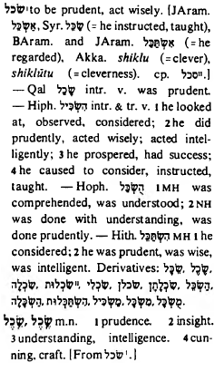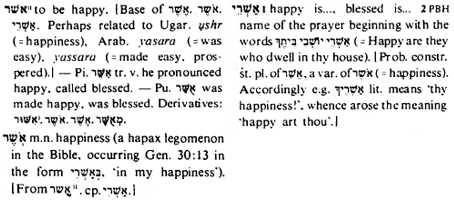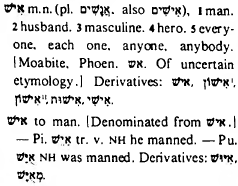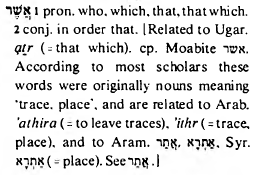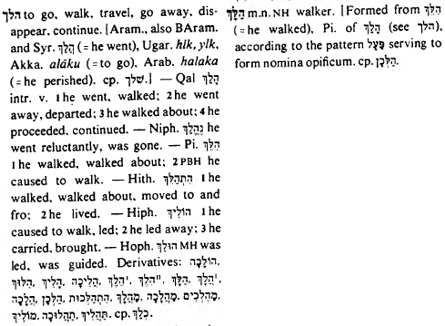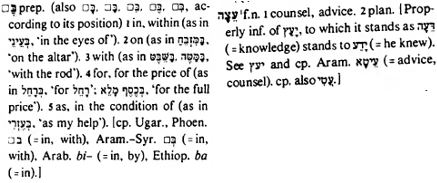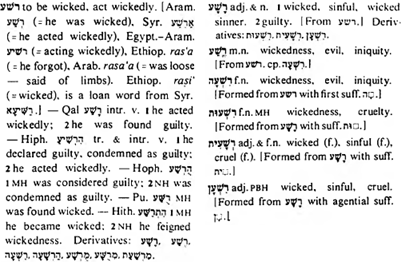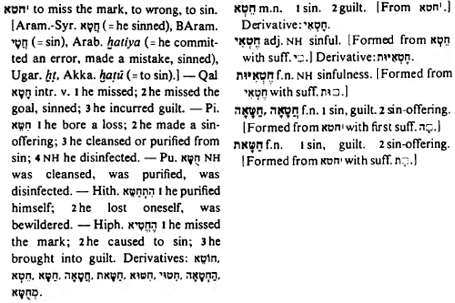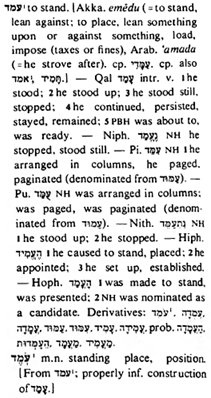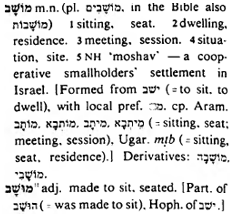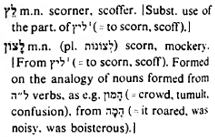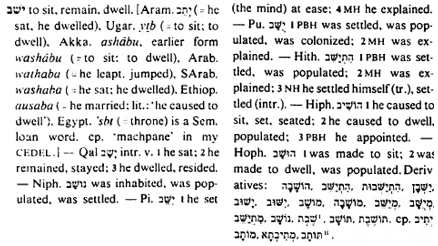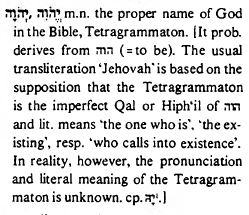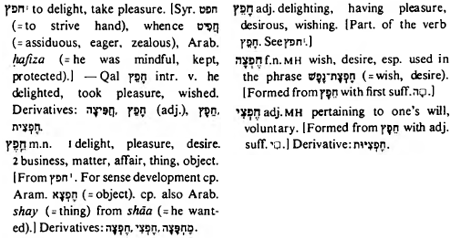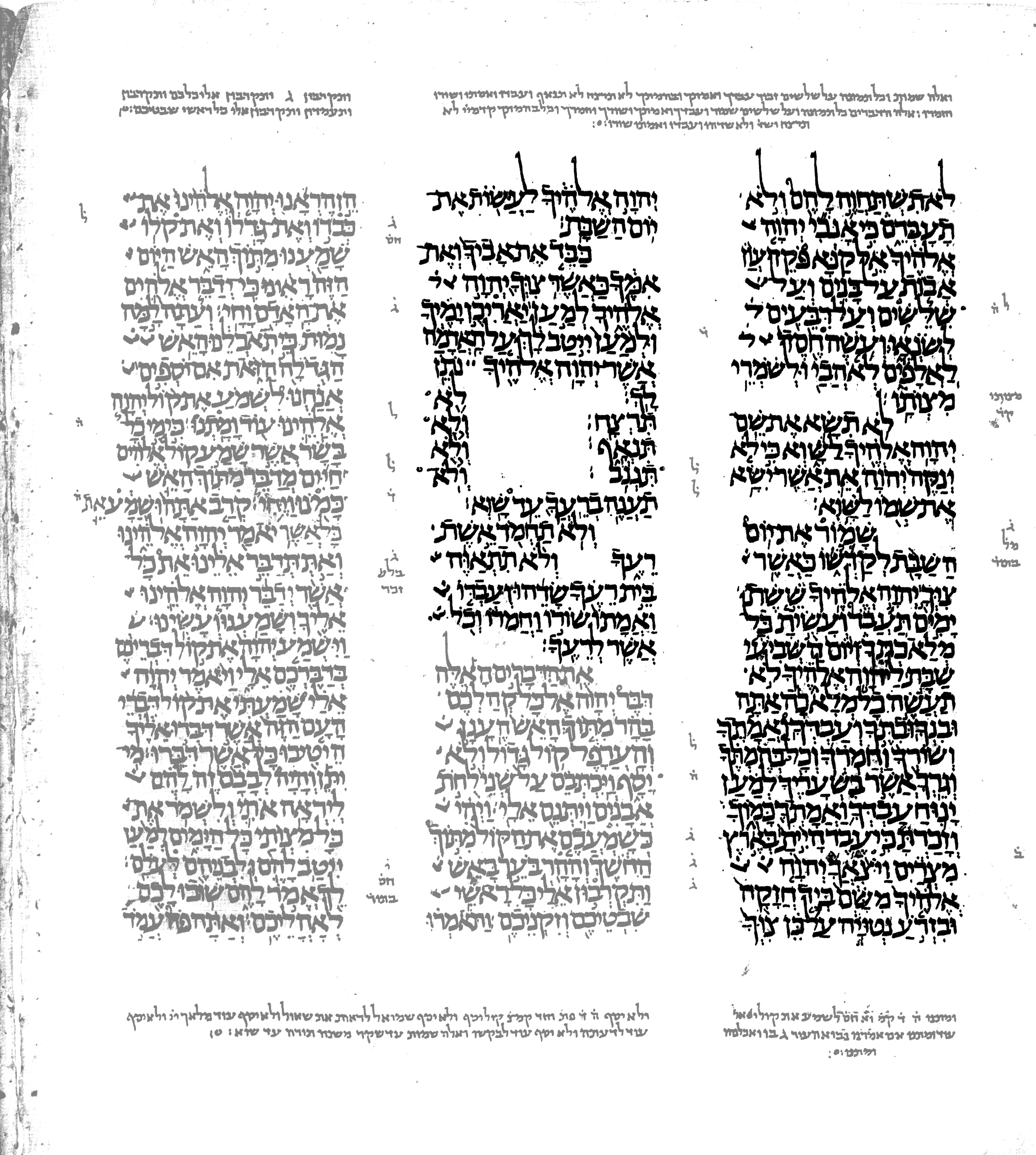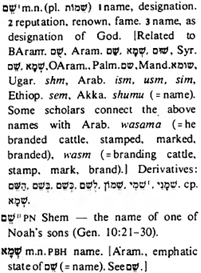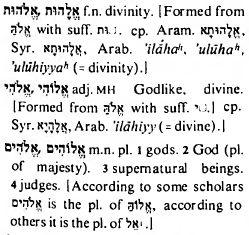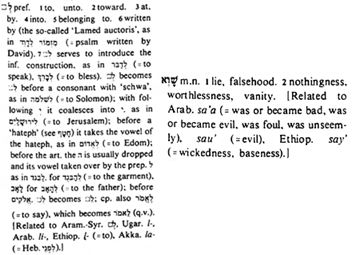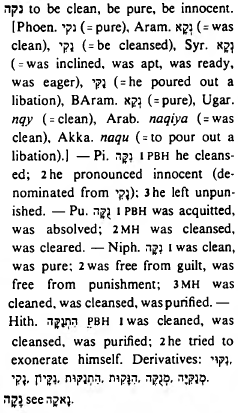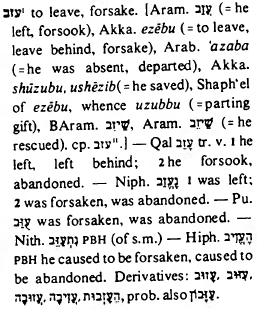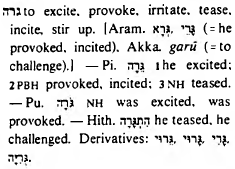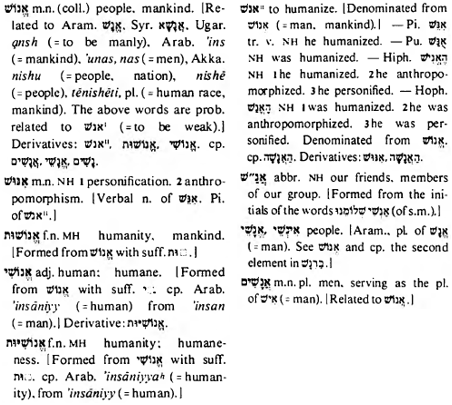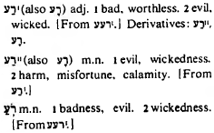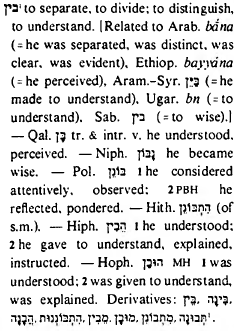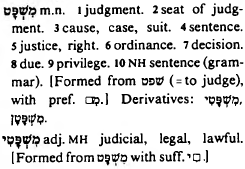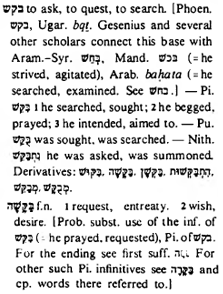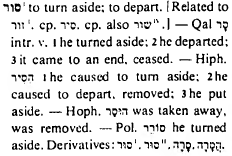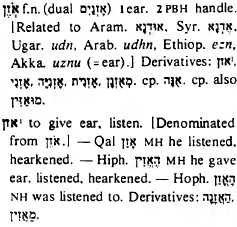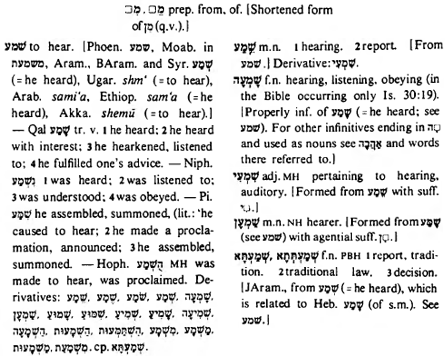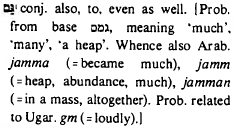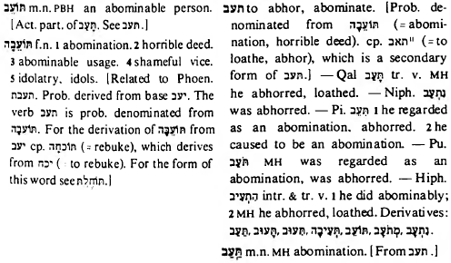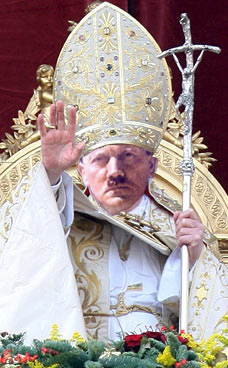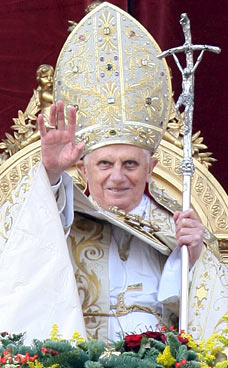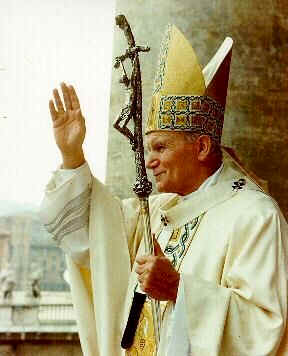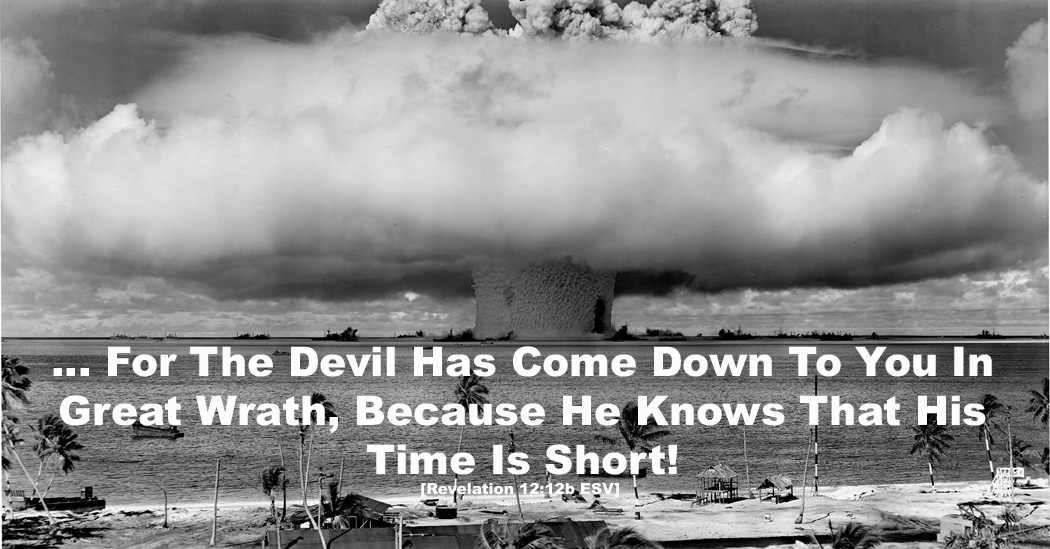| Tue, 01 Jul 2025 21:39:42 -0500 Yom Shlishi, Chodesh Rvi'i 5, 6025 — יום שלישי חדש רבעי ה ו׳כה |
|
|
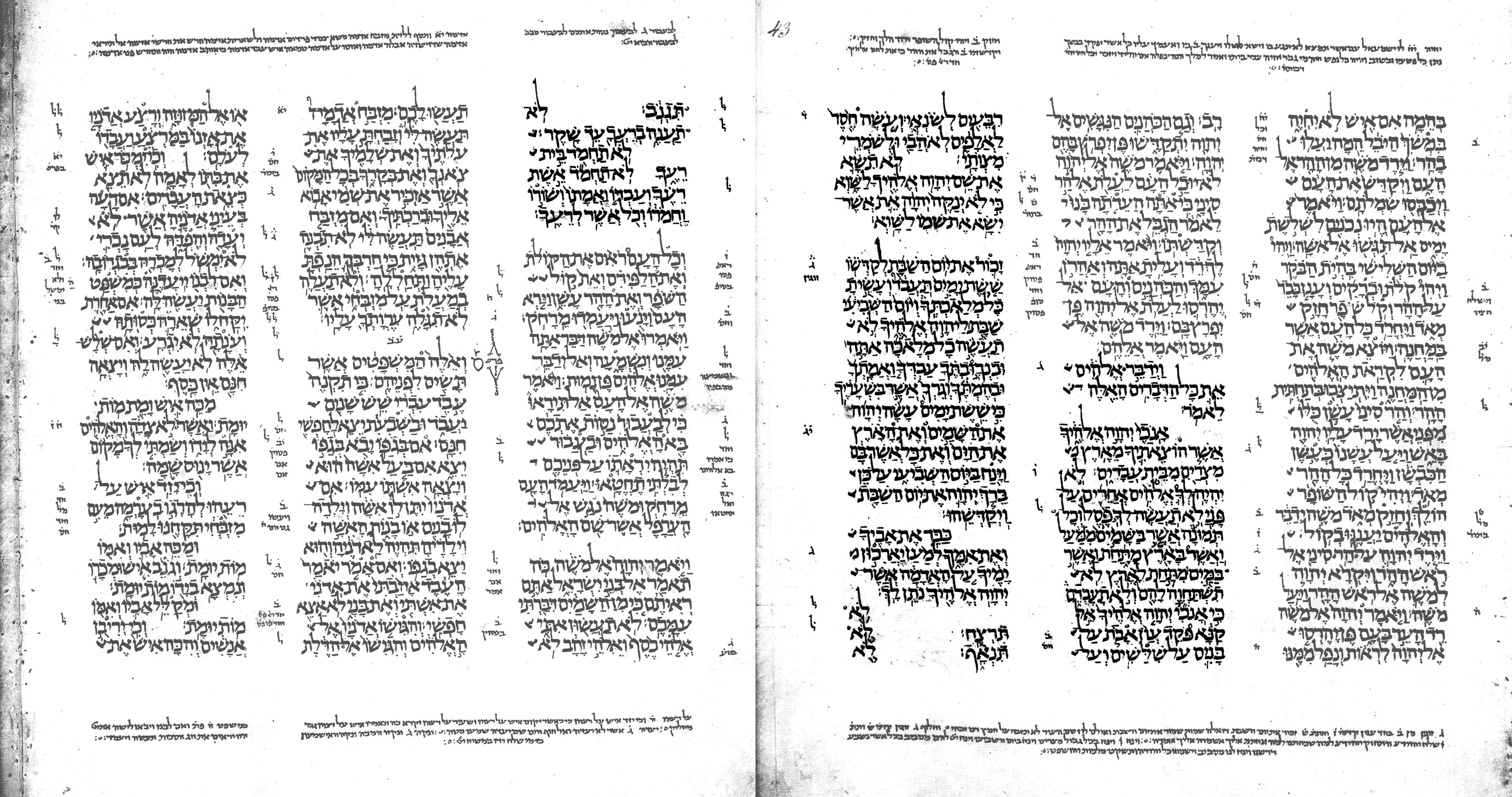
Select or Right-click to download PDF File: The Ten Commandments in Exodus 20 In The Leningrad Codex |
|
|
|
Why I Display The Following Four Books
Directly below, I display my Four self–published books with summaries, the latest appearing first. I have included these summaries in an effort to present many of the ideas expressed on this website as well as new information not necessarily found elsewhere! |
|
|
|
This book is a commentary on Daniel 9 in the Hebrew-language
based Jewish Scriptures.
The first part of the book is focused on verse 25. I provide detailed definitions of Hebrew words, but also discuss verse structure and Hebrew cantillation marks, both of which designate two distinct, independent parts to the verse. For a long time I had subscribed to the idea that the verse referred to the coming of the person known as The Messiah. In my youth, at the request of my atheist mother, I had read the book 'The Late Great Planet Earth,' by Hal Lindsey, which introduced many to the idea of the Messiah and a Christian premillennial end-times view (FYI, none in my family had any religious affiliation at the time, and we all considered ourselves atheists)! Last summer (2024) I felt driven to better understand Daniel 9. I had previously only been concerned with Hebrew cantillation as it occurs at the end of every verse in the Tanakh (as always designated by a Silluq Emperor accent). I decided to look at the Hebrew more thoroughly, wanting to know the purpose of other cantillation marks having to do with grammar. To my surprise, I learned that the Ethnacta Emperor accent ([ ֑ ] – shaped like an upside down "u" or "v", occurring to the left of the vowel having the word's main accent), separates longer verses into two distinct sections. Interestingly, an Ethnacta occurs in the שָׁבֻעִ֖ים שִׁבְעָ֑ה "seven weeks" in verse 25 of Daniel 9!
Daniel 9:25
וְתֵדַ֨ע וְתַשְׂכֵּ֜ל מִן־מֹצָ֣א דָבָ֗ר לְהָשִׁיב֙ וְלִבְנ֤וֹת יְרֽוּשָׁלִַ֙ם֙ עַד־מָשִׁ֣יחַ נָגִ֔יד שָׁבֻעִ֖ים שִׁבְעָ֑ה וְשָׁבֻעִ֞ים שִׁשִּׁ֣ים וּשְׁנַ֗יִם תָּשׁוּב֙ וְנִבְנְתָה֙ רְח֣וֹב וְחָר֔וּץ וּבְצ֖וֹק הָעִתִּֽים׃
Know therefore and discern, that from the going forth of the word to return to and to
build Yerushalam unto Mashiach nagid shall be seven weeks; and for sixty-two weeks,
it shall be built again, with broad place and moat, but in troublous times.
Thus, contrary to the prophetic teaching of Christian premillennialists where they teach that Messiah was to come after the end of the sixty-two weeks, at the Ethnacta cantillation mark the Messiah (Mashiach Nagid) is associated with the seven weeks (49 years) at the beginning of the timeline from the order given to return to and build Yerushalam! This, as well as other supporting information is well documented in this book, "Ad Mashiach Nagid The Messiah In Daniel 9." Additionally, I have a chapter on The Ten Commandments in the Leningrad Codex, and also include basic information for the study of the ancient Hebrew language in my chapter "Seek Yehovah." 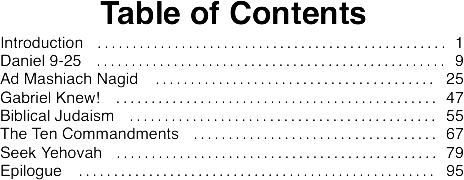
Softcover ISBN: 979-8-9882917-3-2 (available as of January 21, 2025 — $12.00) eBook EPUB ISBN: 979-8-9882917-4-9 (available as of February 6, 2025 — $2.99 – Such a bargain!) Available at over 39,000 Online stores, including Amazon, Barnes And Noble, Books A Million, and Walmart |
|
|
|
|
|
Essentially, this book is a commentary on the man
responsible for being THE ARCHITECT OF THE MAIN DOCTRINES
OF CHRISTIANITY, SAUL OF TARSUS, who is more commonly known as The Apostle Paul.
On this website (The-Iconoclast.org), I present information under the title "Paul The False Apostle" which is found on the "Breaking Idols"` (topmost item on that page). However, in the book, I address Paul's antinomian theology in a more systematic way with corroborating references; testing quotes in the Christian Scripture (New Testament, NT) against their references in the Jewish Scriptures, rather than interpreting the Jewish Scriptures by their NT quotes as so many Christian apologists do! Has it ever occurred to you that it might be important to verify supposed quotes in the Christian Scriptures (New Testament) which make references to the Jewish Scriptures (what Christians call The Old Testament)? If you were to do so, would you be able to say, beyond a shadow of a doubt, that the Christian Scriptures are absolutely flawless in their references to the Jewish Scriptures, that they are 100% reliable? In this book, the abject anti–Torah ethos of Saul of Tarsus (the Apostle Paul) and his antinomiam views are directly exposed! By examining his own writings as well as comparing his references to the Jewish Scriptures by actually looking at the Jewish Scriptures, Saul of Tarsus (Paul) is found not to be quite so genuine, authentic and reliable as his disciples have been led to believe! This is not an accident! He consistently misquoted, and took out-of-context, the writings of the Holy Prophets of Yehovah. By examining the true references which can easily be found in the Hebrew-Language based Jewish Scriptures sourced from the ancient Leningrad Codex, "The Apostle Paul" displayed an extremely cavalier attitude in his penchant for misleading his own disciples while promoting himself above Jesus!
"Now I rejoice in my sufferings for your sake,
and in my flesh I am filling up what is lacking in Christ's afflictions
for the sake of his body, that is, the church,"
[Colossians 1:24 ESV] From his own writings and those of his biographer friend, Luke, Paul and Luke were consistent in their anti–Torah theology and obfuscation of the plain–meaning and context of passages found in the Jewish Scriptures!
A Cogent Example Of Why NT Quotes Must Be Verified By The Authoritative Hebrew–Language
Based Jewish Scriptures!
I mentioned, above, that in this book, my intent is to measure (test) quotes in the
Christian New Testament against their references in the Jewish Scriptures
(what Christians call "The Old Testament").
For just one example, I will quote verses from Luke's book of Acts against the backdrop of quotes from the books of 1st and 2nd Samuel. YOU can be the judge as to which version of "the Holy Scriptures" you recognize as authoritative!
Christian New Testament Quotes
From the King James Version, aka KJV Acts 13:14–16 — The Audience And The Speaker 14 But when they departed from Perga, they came to Antioch in Pisidia, and went into the synagogue on the sabbath day, and sat down. 15 And after the reading of the law and the prophets the rulers of the synagogue sent unto them, saying, Ye men and brethren, if ye have any word of exhortation for the people, say on. 16 Then Paul stood up, and beckoning with his hand said, Men of Israel, and ye that fear God, give audience.
Referencing The Jewish Scriptures
20 And after that he gave unto them judges about the space of
four hundred and fifty years, until Samuel the prophet.
Acts 13:20-22 21 And afterward they desired a king: and God gave unto them Saul the son of Cis, a man of the tribe of Benjamin, by the space of forty years. 22 And when he had removed him, he raised up unto them David to be their king; to whom also he gave testimony, and said, I have found David the son of Jesse, a man after mine own heart, which shall fulfil all my will. Please note that Paul states that King Saul ruled for forty years!
Now, what do the ancient Jewish Scriptures say?
1 Samuel 13:1
בֶּן־שָׁנָ֖ה שָׁא֣וּל בְּמָלְכ֑וֹ וּשְׁתֵּ֣י שָׁנִ֔ים מָלַ֖ךְ עַל־יִשְׂרָאֵֽל׃
Saul was ---- years old when he began to reign; and two years he reigned over Israel.
2 Samuel 5:4
בֶּן־שְׁלֹשִׁ֥ים שָׁנָ֛ה דָּוִ֖ד בְּמָלְכ֑וֹ אַרְבָּעִ֥ים שָׁנָ֖ה מָלָֽךְ׃
David was thirty years old when he began to reign, and he reigned forty years.
Paul states that King Saul ruled for forty years, yet the plain text and context of the ancient Hebrew–Language in 1 Samuel 13:1 plainly declares that Saul reigned for only two years. Thus, according to the "history" written by Luke as found in Acts 13 — David could not have been born when Saul began his reign as King of Israel! 2 Samuel 5:4 says that King David began his reign when he was at age thirty! The question I ask you, do you trust Luke and Paul — and the Christian New Testament — for your knowledge of the history of ancient Israel — or do you consider the ancient Hebrew–Language Jewish Scriptures sourced in the Masoretic Text, the Leningrad Codex, to be the greater authority? For my part, I absolutely trust that the ancient Hebrew–Language of the Masoretic Text – The Leningrad Codex – is the greater authority! Of course, everyone is entitled to interpret what they consider to be the authoritative Scripture themselves! However, I do not believe that both versions of ancient Jewish history can be true at the same time! This book uncovers the great deception of The Self–Appointed–Apostle–Paul and even refers to it as part of the END–TIME–DECEPTION! * I actually address this subject directly later on in this book with a chapter starting with that same statement (including the asterisk). My intention is that, at that point in the book, I will have led up to it after giving it a sufficient introduction! I have included commentaries about Jesus of Nazareth, and the resurrection, near the end of the book, as a way to express that Jesus CANNOT be a legitimate candidate to being the Jewish Messiah if he actually misquoted the Holy Prophets of יְהֹוָה [Yehovah]!. I realize that the cover of this book is provocative! Being provocative ensures that many people will be too offended even to bother considering this book, let alone even reading this summary! However, that is not my intent as I think many of those folks would benefit by giving it a consideration. Nevertheless, I am also aware that many people are unable to question their own beliefs or challenge their world views, their paradigms. As an FYI, the photograph was taken by David H. Rossman and was used by his permission (we met on an Israel trip together in 2018 — I think he is a great photographer!). Moreover, I have a chapter called 'The Talmudic Deception.' It is a brief commentary on Talmudism, the Jewish religion whose doctrine revolves around the rabbinic, oral tradition. When Talmudists mention the 'Torah,' in a euphemistic way, they really mean 'The Oral Torah,' also known as 'The Oral Law' — which is actually their own oral tradition, their own writings! When I speak about 'The Torah,' I mean the WRITTEN TORAH, also known as the five books of Moses! Have YOU been deceived by this rabbinic subterfuge? Hardcover ISBN: 979-8-9882917-0-1 Softcover ISBN: 979-8-9882917-1-8 eBook EPUB ISBN: 979-8-9882917-2-5 NOTE: Microsoft Word to EPUB conversion programs (that I have found) do not carry forth the original fonts but rather substitute a plain serif font for English and an italicized plain font for the Hebrew. That conversion also breaks pages up differently: 162 pages are in the printed version, while 303 in the eBook format EPUB, including cover). The content is preserved, but it is just not as had been written for print. As an FYI, I do not think it is aesthetically pleasing as the printed versions. Yet, for those who prefer a digitized format, if you can get past the aesthetics, again, the content is preserved. Available at over 39,000 Online stores, including Amazon, Barnes And Noble, Books A Million, and Walmart |
|
|
|
|
Just one important example of why there is need for a new Hebrew–English Jewish Scriptures: I changed all '1,110 rabbinic Qere/Ketiv instances' to make what the Masoretic Scribes wrote to be the preferred rendering, relegating 'rabbinic Qere additions' to unobtrusive, small footnotes notations! The Pill Tanakh preserves the Hebrew text just as the Masoretic Scribes intended in the first place! You may wonder why I place such importance of minimizing the "rabbinic additions," which are found written in the margin on a line in the Masoretic Text. You may ask, "just what am I talking about?" You may also express, "I've never heard of the Qere/Ketiv, so, what's the BIG DEAL?" The Leningrad Codex is the oldest complete manuscript of the Hebrew Language Based Jewish Scriptures. Most people know of it as The Masoretic Text! Modern Bibles claim that their source for the Jewish Scriptures is the Masoretic Text (again, which is actually The Leningrad Codex). The Leningrad Codex was completed around the year 1009 of the Common Era. It is hand–written on parchment and each sheet typically has three columns (with certain exceptions; for example, Psalms has two columns primarily). On the actual parchment of the Leningrad Codex, on the margin of a line is a word written in consonants only. It is an unvowelled, unaccented "addition" (actually written at a much later time than the original!). This Qere is a word in which rabbis claim was intended to replace the vowelled and accented word in the midst of that same line, typically having the same consonantal base. The word in the margin is known as Qere, meaning, "What is read." – it is what rabbis insist MUST ALWAYS BE READ!. The word intended to be replaced is within the same original Hand–Written, Masoretic line and is known as Ketiv, meaning, "What is written" — and which the rabbis command MUST NEVER BE UTTERED. The Qere additions are written on the parchment itself! I refer to them as "rabbinic additions" because I believe they were added at a much later time than the original text was written — and, not written by the Masoretic scribes, themselves, but more likely by Talumudic rabbis; otherwise, why do the rabbis insist that these "additions" MUST ALWAYS BE READ, but that which was originally written by the Masoretic scribes, the Ketiv, NEVER? An example can be found by seeing how prominent Jewish Bibles FORCE a reading of the "rabbinic Qere additions." The Stone Edition Tanach places the Qere ("what is read") additions in the place of the Hebrew text where the original Ketiv (what the Masoretes originally wrote), which are placed within brackets following the Qere additions in the same line of the text. In The Koren Tanakh, on the line that the Qere replaces the original Ketiv, the fully voweled and accented Ketiv is placed in the outside margin and the unvowelled, unaccented Qere is placed naturally in what was previously the position of the Ketiv. In both cases, the original writing of the Masoretes is obfuscated and relegated to an unnatural rendering and the rabbinic Qere additions are within the natural flow of the Hebrew text, forcing the reader to disregard the original Ketiv, and honor the later rabbinic Qere additions instead! Unfortunately, this forced obfuscation of the written text may have influenced CHRISTIAN BIBLES as well!
"In a number of the texts containing K
לא and Q
לוֹ (Ex 21:8; 1 Sam 2:3; 2 Kings 8:10; Is 63:9; Ps 100:3), the Ketiv is as acceptable as is the Qere,
yet nearly all of the English Bibles surveyed opt for the Qere. This might indicate that the translators are
predisposed to give priority to the Qere unless some other factor makes it clearly unusable."
(Tim Hegg, "To Read or Not to Read?: Translating the Qere/Kativ," TorahResource Institute, accessed 25 May 2022, https://tr-pdf.s3-us-west-2.amazonaws.com/articles/to-read-or-not-to-read-qere-ketiv.pdf; Note that in the above quote, Hegg has the Hebrew for the Ketiv and the Qere reversed. I have not corrected it herein, but as in Exodus 21, it is quite clear that the Ketiv is accented and vowelled. Moreover, it should be known that the Ketiv (what is written) is always from the original, hand–written, vowelled and accented Hebrew of the Masoretic Text; while the Qere (what is read) is always unvowelled and unaccented, containing consonants only! — Robert Pill). Thus, in The Pill Tanakh, the rendering of what the Masoretes originally wrote is preserved! The unnatural rabbinic additions (Qere) are minimized, placed within a small footnote notation! Again, you may find it of interest that the rabbis demand that their Qere additions are always read, but they insist that the Masoretic original, Ketiv, should NEVER BE UTTERED! "The rabbis" have intentionally obfuscated the original Hebrew Text in Jewish Bibles!
Another Reason To Consider The Pill Tanakh!
I refer you to the section called "A Cogent Example Of Why NT Quotes Must Be Verified By The Authoritative Hebrew–Language Based Jewish Scriptures!" under the book "Jesus Cannot Be The Jewish Messiah*." If you want to have a resource which you can safely know is the ancient authority for the Jewish Scriptures (Old Testament), since "The Pill Tanakh" is based upon the Masoretic Text, The Leningrad Codex, you can verify referenced quotes against interpretations represented elsewhere, as in the Christian Scriptures! If you click on the images, above, of the "The Pill Tanakh" it will display a pdf file of the 22 page introduction. I talk about some of the reasons I self–published this three volume book, the foundational Hebrew based upon the ancient Leningrad Codex (Masoretic Text), some of the difficulties in converting the UTF–16 unicode multiwide–encoded source from the digitized Westminster Leningrad Codex (WLC), as well as some of the changes I made to the English text of the Jewish Publication Society version of 1917 (JPS 1917) which I feel are more representative of the Hebrew text. First published in September, 2022, The Pill Tanakh, Hebrew-English Jewish Scriptures (in three volumes): Volume 1 - The Torah (520 pages, soft-cover retail $28.99; hard-cover $36.00 [a double Chai!]), Volume 2 - The Prophets (970 pages, soft-cover retail $41.99, hard-cover $49.00) and Volume 3 - The Writings (688 pages, soft-cover retail $32.99, hard-cover $40.00). (Be aware that some stores may not honor pricing models, including Walmart!). Available at over 39,000 Online stores, including Amazon, Barnes And Noble, Books A Million, and Walmart |
|
ARE THE TEN COMMANDMENTS
RELEVANT TODAY? |
|
The 10 Commandments
(Exodus 20 And Deuteronomy 5) As Rendered In The Leningrad Codex (circa 1009) !!! |
|
|
| Be it known that the oldest complete manuscript of the Hebrew Scriptures, the Leningrad Codex, has different verse breaks for Exodus 20 and Deuteronomy 5 than essentially all "Bibles" which presume to claim the Leningrad Codex as their source! | ||||||||||||||||||
Verse Count Differences With JPS 1917, KJV, NIV, CJB
|
||||||||||||||||||
|
Should this matter?
Joshua 1:8
Psalms 1:1-2
Hebrew scholars regard The Leningrad Codex as the definitive Ancient Hebrew source for the Hebrew Scriptures. Yet, regarding the verse ordering of Exodus 20 and Deuteronomy 5 where the 10 Commandments are given, it can readily be shown that the actual Leningrad Codex has NOT been directly adhered to by modern translations as well as their related Hebrew texts (including the Westminster Leningrad Codex – the digitized version of the actual facsimile Leningrad Codex)! Thus, not just verse counts, but also the structured order of how those verses have been individually separated by the Masoretes (the group known to have written the Leningrad and Aleppo Codices) should be considered to have been done deliberately, with thoughtful purpose, especially considering that those (Karaite) Masoretes, no doubt, judiciously consulted available ancient Hebrew texts! Moreover, if regular MEDITATION ON THE TORAH is deemed important, sincere and thoughtful consideration should be given to meditating on the most iconic portion: 
– The Ten Commandments –
וַיִּתֵּ֨ן יְהוָ֜ה אֵלַ֗י אֶת־שְׁנֵי֙ לוּחֹ֣ת הָֽאֲבָנִ֔ים כְּתֻבִ֖ים בְּאֶצְבַּ֣ע אֱלֹהִ֑ים וַעֲלֵיהֶ֗ם כְּֽכָל־הַדְּבָרִ֡ים אֲשֶׁ֣ר דִּבֶּר֩ יְהוָ֨ה עִמָּכֶ֥ם בָּהָ֛ר מִתּ֥וֹךְ הָאֵ֖שׁ בְּי֥וֹם הַקָּהָֽל׃
"And Yehovah delivered unto me the two tables of stone written with the finger of God; and on them was written
according to all the words, which Yehovah spoke with you in the mount out of the midst of the fire in the day
of the assembly."
[Deutaronomy 9:10 The Pill Tanakh] Note that יְהֹוָה [Yehovah] considered HIS TEN COMMANDMENTS important enough that HE WROTE THEM BY "The Finger Of Elohim On Two Tablets Of Stone", which were placed in the Ark Of Acacia Wood / The Ark Of The Covenant / The Ark Of The Testimony / also known as The Ark Of Elohim and The Ark Of Yehovah (as they are called in 1 & 2 Chronicles!) If interested, see Deuteronomy 10:4–5 and "The Finger of Elohim" Scriptural references as found in the passages in Exodus 31:18 or Deuteronomy 9:10.
WasThe Temple Merely An Empty Shell
— Without The Ark Within Its Midst? — Moreover, it is noteworthy that "The Ark of the Covenant" was only in the Mishkan (Tabernacle in the Wilderness) and in Solomon's Temple. It was not found in the Temple described by Ezekiel (chapters 40–48); neither was it found in the Second Temple built after Judah returned from Babylon and rebuilt Jerusalem. It was in "The Ark of the Covenant" / "The Ark of the Testimony" / "The Ark of Elohim" / "The Ark of Yehovah" ( אֲר֥וֹן יְהוָֽה [2 Chronicles 8:11]) where the presence of the Almighty God, Yehovah, dwelt among the children of Israel! It should be noted, however, that Ezekiel's description of the presence of Yehovah, found in Ezekiel 43:4-11, does show that Yehovah would dwell in the Temple, although the description of the Temple does not include the Ark of the Covenant. Nonetheless, Ezekiel's vision absolutely demands that the presence of Yehovah is contingent upon the people keeping the commandments and being undefiled. When will the people of Israel, who were chosen by Him specifically, be able to say that they are undefiled and that they willingly keep His commandments, statutes and ordinances? We must consider to question regarding the Temple, as described by Ezekiel, when he was in Babylon with the northern ten tribes known as Israel. Was it a description of the future Temple to be built by Ezra and Nehemiah upon returning from Babylon which did not have the Ark of the Covenant in its midst? Or, was it a description of a much later, future Messianic Temple, as presumed in Christian eschatology and through its many "prophets?" Is it possible that Ezekiel's Temple may have had no prophetic intent whatsoever, and that anyone promoting that idea could possibly be considered to be a candidate as a false prophet? Without the Ark of the Covenant and its constant reminder of The Ten Commandments, should the second Temple be considered merely to have been an empty shell? Should we consider that the presence of Yehovah is contingent upon His people honoring Him and keeping His Commandments? Do you, dear reader, honour Yehovah and keep His Commandments? Do you love HIM with all of your heart? Can you honestly claim that you are undefiled? Do you even know what the Ten Commandents demand of you? Further, you may discover that the Masoretes knew EXACTLY what they were doing when they ordered the verses as they did for the 10 Commandments (click either of the following lines to open the respective pages): The Ten Commandments in Exodus 20 Downloadable PDF File – Exodus20v1-12InLeningradCodex_Printable.pdf – (Right Click To Download–Or Just Click!)
The Ten Commandments in Deuteronomy 5
Downloadable PDF File –
5Deuteronomy6-19InLeningradCodex_Printable.pdf
|
|
Exodus 20 & Deuteronomy 5
In The Leningrad Codex |
|
|
| Why Might You Want To Compare Companion Verses? |
| We, at The-Iconoclast, consider that the Ten Commandments given to Moshe (Moses) directly from the hand of יְהֹוָה [Yehovah] to be The Crown of the Torah! |
| To introduce this discussion, we compare the companion verses of Exodus 20:5 and Deuteronomy 5:11. If you follow the link provided (click on the Leningrad Codex images above), you will see that we go into greater detail for this introductory discussion, followed by the actual side–by–side comparison passages that make up The Ten Commandments. |
|
|
|
By visually comparing the companion verses of the Hebrew texts of Exodus 20 and Deuteronomy 5, we believe that one can readily determine the essence of meanings rarely captured correctly, if ever, in English translations (this is particularly evident, to us, for the third commandment). Are we saying that, of these original Hebrew passages, some of the English translations (interpretations) are incorrect in addition to NOT conforming to the Masoretic verse ordering? YES, ABSOLUTELY!
For instance, the same Hebrew word
לַשָּֽׁוְא
It should prove of interest to learn that the word used in Exodus 20:11
(
שָֽׁקֶר
The Hebrew word
שָֽׁקֶר
Thus, it should reasonably be understood that the passages interpreted/translated "Thou shalt not take the name of Yehovah thy God in vain..." are not correct! Perhaps a closer interpretation is "Thou shalt not take the name of Yehovah thy God as nothing, for Yehovah will not hold him guiltless that taketh His name falsely." It is quite unfortunate that so many people who believe they have a grasp on the meaning of the Ten Commandments, and particularly on how they rely upon the misinterpreted translations for the third commandment, since it is often defined, in reality, to say "Do not take the Name of God as a swear word". Obviously, it is a very different thing to consider, rather, that the third commandment would say anything like "Do not take the Name of the Lord thy God with such contempt as to treat Him so lightly, as if he doesn't exist, as if His Name symbolizes worthlessness"! How Could You Otherwise Come To Understand This? Actually, we don't think that it is likely that you would! That is one of the reasons we have put the comparison page together, so that all of us can better understand the meaning of The Ten Commandments as found in Exodus 20 and Deuteronomy 5! Then, "click" the following link: Comparing The Companion Passages of Exodus 20 and Deuteronomy 5 In the Leningrad Codex. |
|
|
